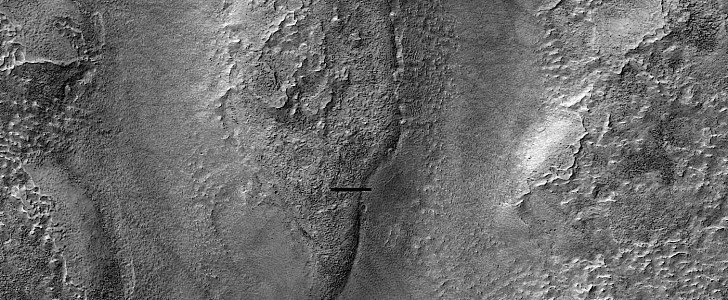Although generally people say Earth’s sister planet is Venus, on account of various reasons, for most of us Mars is the place we consider closest to our hearts.
Venus is seen as Earth’s twin because it’s roughly the same size, has about the same mass, and it’s made of pretty much the same materials. Yet Mars may seem ever more similar, because we now know that sometime in its past, vegetation, liquid water, and perhaps even life were a given on the surface of the now barren, reddish planet.
Having studied Mars extensively over the past few decades from both on the ground and high up in orbit, scientists are pretty confident it once had not only liquid water, but it had it in the form of oceans, lakes, and even rivers.
It’s the HiRISE camera we have to blame for this confidence, a piece of hardware that has been surveying the place from high up in orbit since 2006. Among the tens of thousands of images it sent back over the years, some show the remnants of flowing water.
As most of you all ready know, rivers have a way of leaving traces of their existence in the soil beneath. The same seems to have been detected in many places on the Red Planet, hinting of a very active past.
Presently, most of the river beds are dry, and most of the time barely visible, like we have in this image here, captured by HiRISE back in 2017 from an altitude of 250 km (155 miles).
It shows a portion of the planet called Tader Valles, a place filled with channels that point to “a number of tributaries emptying into a carved channel into one of the main river.”
Since it’s too late to witness flowing water on Mars, the people looking at this image, who work for NASA and the University of Arizona, hope to “better understand the past fluvial and lacustrine (lake-like) environment and processes on Mars, and how they compare to those on Earth.”
Having studied Mars extensively over the past few decades from both on the ground and high up in orbit, scientists are pretty confident it once had not only liquid water, but it had it in the form of oceans, lakes, and even rivers.
It’s the HiRISE camera we have to blame for this confidence, a piece of hardware that has been surveying the place from high up in orbit since 2006. Among the tens of thousands of images it sent back over the years, some show the remnants of flowing water.
As most of you all ready know, rivers have a way of leaving traces of their existence in the soil beneath. The same seems to have been detected in many places on the Red Planet, hinting of a very active past.
Presently, most of the river beds are dry, and most of the time barely visible, like we have in this image here, captured by HiRISE back in 2017 from an altitude of 250 km (155 miles).
It shows a portion of the planet called Tader Valles, a place filled with channels that point to “a number of tributaries emptying into a carved channel into one of the main river.”
Since it’s too late to witness flowing water on Mars, the people looking at this image, who work for NASA and the University of Arizona, hope to “better understand the past fluvial and lacustrine (lake-like) environment and processes on Mars, and how they compare to those on Earth.”






